In the context of penetrating into the customer, insight is considered as the success factor for the business. Consequently, the development of Omnichannel Customer Journey and the journey map to optimize the user experience is really necessary.
| Table of Content 1. What is Omnichannel Customer Journey? 2. The importance of mapping customer journey 3. How to Mapping Omnichannel Customer Journey? 4. Best Practices 5. References |
1. What is Omnichannel Customer Journey?
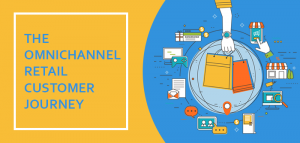
The customer journey is the process that every customer experiences when they first identify their main problem, then find the optimal options to solve that problem. When they become more confident with their choices, they will end the journey with the final decision.
And the Omnichannel customer journey will make the experience more and more smooth. As well as giving a great shopping experience to the consumer with a seamless integration of channels and data.
| Bonus: Download a free guide that will show you how to tracking the Omnichannel Customer Journey here. |
|---|
2. The importance of mapping customer journey in Omnichannel Retail
Customer journey mapping is begun by understanding the motivation of your target audience and identifying relationships that align with your business objectives. This customer-centered approach focuses on creating a positive customer experience and fostering that experience.
You want to create an experience whereby your customer expectations are met with satisfaction when buying a product from your brand. This satisfaction is what customers get when they find what they want, go through the buying process and enjoy the features of the product or service.
“68% of customers said they changed the provider because of bad customer service.” (Accenture)
Regardless of whether or not, the customers are aware, the ease or difficulty they experience in the purchase process has a significant effect on the level of satisfaction. Your job is to take the opportunity to discover, understand and optimize to bring better value and improve customer satisfaction.
Omnichannel Software
A Retail Management System streamlines separate sales channels to provide seamless shopping experiences anytime, anywhere.
3. How to mapping Omnichannel Customer Journey?
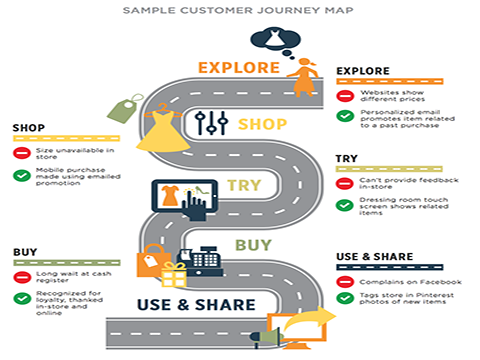
a) Determine the main purpose of the customer journey map
Before you do anything, surely you need to identify the main aim, right? Mapping the customer journey is the same! It can be a journey mapping a specific customer group (a persona), a prospect (a target) or a customer segment.
To determine the purpose of the itinerary, first clarify the business objectives for which the itinerary mapping will have a direct impact, for example:
- Set up an itinerary framework that applies to all or most clients to get the most common understandings of phases, goals, touch points …
- Rearrange departments, units that have a connection or directly affect the customer experience.
- Support the planning process to invest more deeply in optimizing, personalizing the experience.
- Plan to reach a new customer segment.
- Optimize the experience of a group of highly profitable customers for the business.
- Understand the difference in the experience of a particular customer segment or group of customers in comparison with the entire customer of a business.
- Grow your business by targeting new customer groups or driving potential customers to convert
b) Build a map from the perspective of the customer, instead of the business perspective of the retailer
Once we have identified the purpose and necessity of mapping the Omnichannel customer journey, it is important to note that the customer journey map should be drawn from the viewpoint of the customer, instead of the subjective view of the business in Omnichannel retail.
Because, in the context of customer experience as a prerequisite factor, it is expected that in the short term the replacement of price competition is likely to take place from the user point of view to map the customer journey. And this will really bring efficiency.
Additionally, the customer journey map that builds on the perspective of the business will only pay attention to the use of business processes, systems and people in the way that the business mindset is based on. Then, the customer’s perspective will be added to the built-in frame. Is it still necessary to draw a customer journey map?
In contrast, a journey map built from the perspective of the customer will use their experience as a platform. Rather than thinking about stages and steps from a system or perspective in the business process, developing a journey in this direction will be based on what the customer actually acts and feels. It emphasizes the thought of customers as they interact with the brand across multiple touchpoints or relationship stages.
The best way to avoid this fundamental mistake is to choose a seasoned customer experience consultant and conduct detailed research to create the unbiased understanding of the customer journey.
c) Understand the basic objectives of the customer
Your customers interact with the brand to meet and address specific goals, sometimes it’s called demands or expectations, such as:
- Determine exactly what is your choice?
- Make sure you are paying a reasonable price
- Feel respected
Defining client intentions at each stage of the journey allow you to accurately assess the level of experience you are providing – whether it meets basic needs.
The value of the journey map with the business decision depends largely on the outcome of the evaluation. So, make sure you have the best understanding of your client’s goals!
d) Describe the “touch points” that customers create
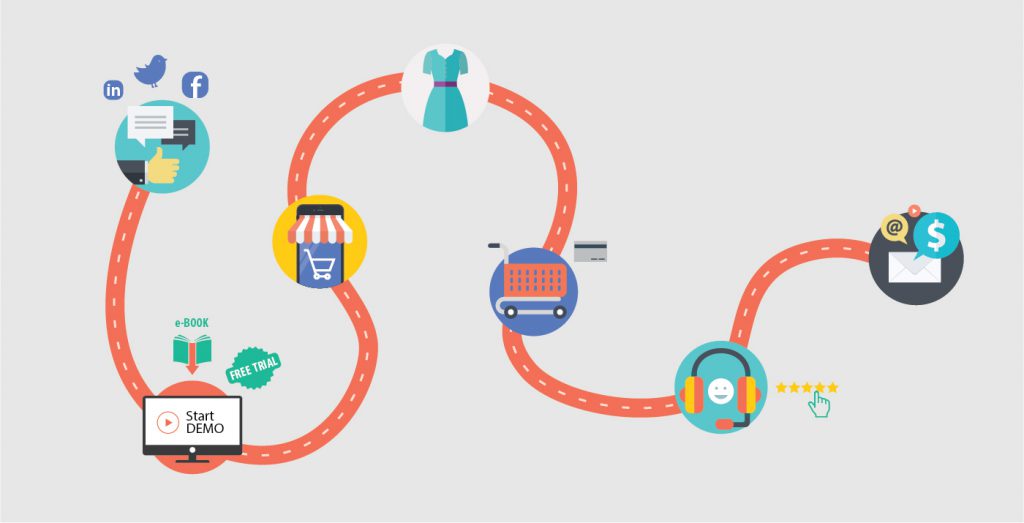
Describe the “touch points” to get the “implicit truth” about the customer
The touch point is where customers interact with the brand or outside of the brand, as they strive to meet their specific goals and needs. For example, when a customer visits a website to look for product information, the point of contact is the customer’s actions rather than the goal of the website.
Some maps only stop at listing all the tools or resources but lack detailed information on the action at each touch point. This only works if you want to know the tools and resources that your customers are using to achieve their goals as well as the relationship between them.
Be sure to describe the touch points that have been customer-centered and approaching inward from the inside to describe how they interact until they reach their goals. And an effective Omnichannel customer journey map will help businesses:
- Identify the minimum distance in the customer experience between touch points
- Assess the impact of these gaps
- Provide “implicit truths” to optimize the customer experience across touchpoints, thereby increasing profitability in business.
e) Use a journey map to “visualize” the emotional interaction
Draw an Omnichannel customer journey map, definitely cannot ignore the emotional connection
Customer experience includes psychology and emotions in the shopping process, not just in the mind. It is essential to understand the emotions that influence the decision of the client throughout the journey to truly understand the experience. It is important to understand not only the way customers “want” but also how they “really feel” at each stage. Whatever the nature of the experience that businesses offer, once you deliver a memorable experience, customers will definitely want to come back.
In the customer journey, emotions can be expressed in different ways. Some maps are very specific about customer feelings.
For example, you may find familiar phrases such as frustrated, confused, satisfied, impressed, or generic phrases like satisfaction – neither good nor bad – bad, or positive – average – pepper pole. Depending on your needs and suitability, you can use words, phrases, symbols or scales, scales or graphs to represent the emotional stages throughout the journey. It is important to capture the emotional experience data at the beginning, then visualize it to show on the map in the most understandable and effective way.
f) Steps to map the Omnichannel customer journey
Once the key elements have been identified as well as the basic mistakes were eliminated, customer journey mapping has become much simpler.
Step 1: Collect data
Chat with the customer care department to understand more: customer feedback on products, services as well as channels and processes to get it? Take advantage of customer and website surveys, customer feedback in online reviews, product follow-up surveys, metrics, analysis, and social networking to identify who your customers are and how they did it. The purpose is to answer the question: Where will the journey stop?
Step 2: Develop Customer Persona – customer portraits
Building an Omnichannel customer journey map based on a very important small group, but most businesses will tend to start with key customer groups or customers in general. If your business is an airline, you can focus on two groups: frequent go for mission and travel.
- What do you know about these customers and their behavior?
- How do they feel about the difference in experience?
For example, it is desirable to get an incentive when buying tickets online with frequent travelers, but those with lesser frequency will find this proposal irrelevant.
Frequent travelers can be very happy when the business adopts a special kind of gratitude program, while, lesser frequent people may find it uncomfortable to click multiple times to answer.
Step 3: Combining customer portfolios with qualitative and quantitative data
Will each individual’s needs be met at each touch point? What can contact points be ignored? Does the customer experience change with each channel? Returning to the example of the airline above, how can you recognize who is the online booking customer, who are the people who put through the support of the customer care staff? Pay attention to the corresponding data by channel.
Step 4: Develop Customer-Aware Questions
What customers really want? Identify their goals when interacting with the business. What are the typical stages of customer engagement? From there, businesses can identify the stages that best fit their situation, however, the most common steps will usually be research, evaluation, decision making, and post-sale care.
Step 5: Review the whole experience and look for opportunities to change
Try out “the shoes” of the customer, in each stage, how do you feel? Is this process easy or hard to accomplish? How long does each part take? What’s the problem? Where can the position be omitted? It is important to detail the answers to these questions as well as to the departments responsible for implementing the changes.
Step 6: Visualize the journey of the customer
There is no consistent rule about whether the customer journey map should look this or that. The most important thing is to map the customer journey to be effective. Some are represented as periods, while others are like pie charts. There is no wrong way of presenting, as long as it is really simple and anyone in the company can understand.
Related Post: Omnichannel Order Fulfillment: The Key to Growth
4. Best Practices
Once you have a basic picture of the role and steps to draw an optimal Omnichannel customer journey map and base on a customer experience platform, with each of the perfect “touch points”. The next part, we will analyze in detail some examples of how the “big boss” have applied the customer journey map to create complete experiences!
Starbucks
Starbucks has long been known for its ability to master and personalize the customer experience. This company owns detailed journeys that calculate how each experience will go, as soon as they walk through the door. Take a few moments, close your eyes and calmly think about your experience as you step into any Starbucks store anywhere you see the customer journey that this “big man” has built successfully. …
The first thing that stimulates your sense of smell is the rich and pleasant taste of roasted coffee beans. Then, as you head towards the friendly barista, you will feel the warmth surrounding you when the mischievous and noisy chatter disappears in peaceful music. When you get the Espresso, you will be surprised to see your name written by one of the funny baristas. If you are a frequent visitor, the bartender will know the exact name and order of your store. And this is just the beginning of the exciting experience at Starbucks.

“When you get the Espresso, you will be surprised to see your name written by one of the funny baristas”
People often do not remember the exact product that first attracted them to the store or website. However, this giant coffee maker does not just sell a product that sells what the customer remembers the most – a personalized experience. By combining the product with an unforgettable experience, the company not only keeps the most loyal customers, but they can charge at least 10 times higher than competitors but customers are still particularly pleased. Starbucks is one of the few businesses that understand the importance of customer experience across the board and applies it to every core business strategy.
Lego
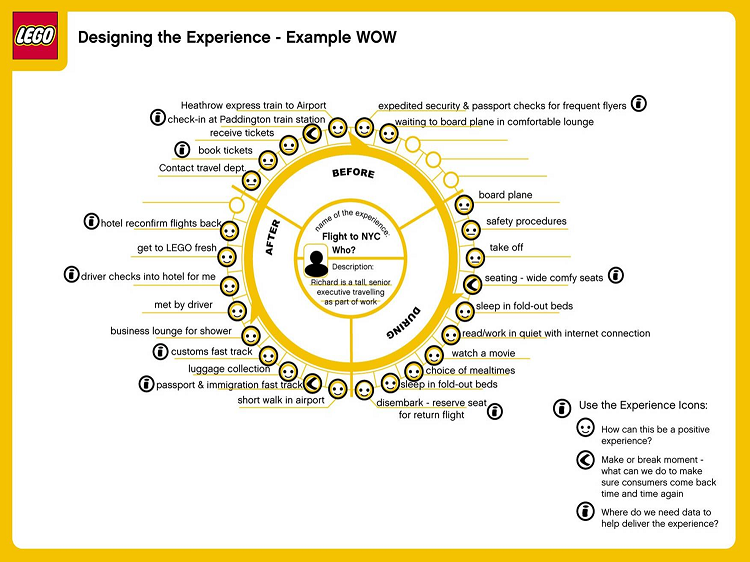
Lego and customer journey map based on model “wheel experience”
Another example of the ability to successfully apply the customer journey map in the creative experience at each touch point that we want to introduce is Lego. This famous children’s toy company used the “customer experience wheel” tool to draw a journey map. “We understand what is important and what is not important to customers in the journey, then we optimize so that any customer when leaving will also be particularly impressive, surprised at each point” – Lego’s CEO shared.
The Omnichannel customer journey map is created in an interesting, simple and step-by-step manner with the centerpiece of the wheel as the target customer. The next round is divided into three levels of experience and the level of achievement of the objectives. Outside the circle, we will see a detailed description of each stage where a customer experiences the journey, each step marked by an emoticon: positive, neutral or negative.
This is a really simple and easy-to-paint map. At the same time, it’s also a great way to evaluate the “Omnichannel customer experience” product and service in three segments before, during and after the journey – a smiley face instead of a good experience while the logo Red angry emotions represent a negative experience.
Related Post: How to Implement an Omnichannel Strategy in Retail?
5. References
Some tools to draw Omnichannel customer journey map:
Smaply
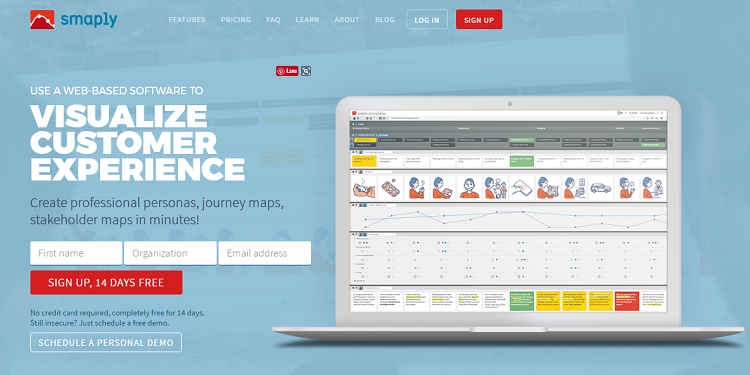
Smaply – customer journey map tool
Smaply uses a slightly different approach to current customer journey mapping tools when focusing primarily on the development of customer-personas. Once you’ve drawn a complete map, you will easily visualize the ecosystem of the customer impact factors, the differences between stakeholders and their relationships.
Touchpoint
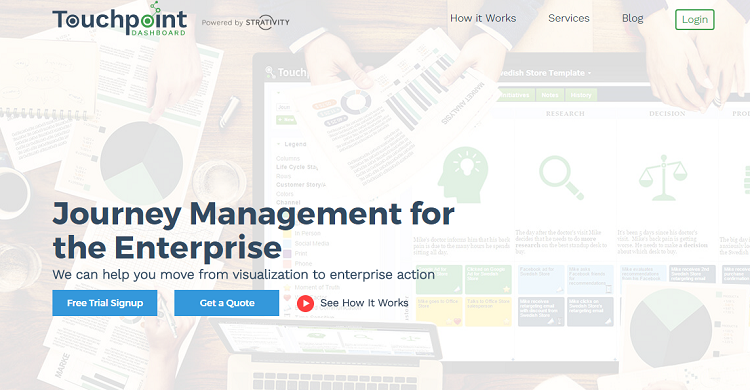
Touchpoint provides a solution that combines teams in the enterprise with the highest level of mapping customer journey
Touchpoint provides a solution that combines teams in the enterprise with the highest level of mapping customer journey. Existing customer data is entered for you to design a comprehensive customer journey.
At the same time, Touchpoint also offers a number of templates to help you get started and easiest to edit and share information. Once you start the test mapping, the touch point can already be calculated to determine your ROI, cost and, most importantly, impact on the customer.
Canvanizer
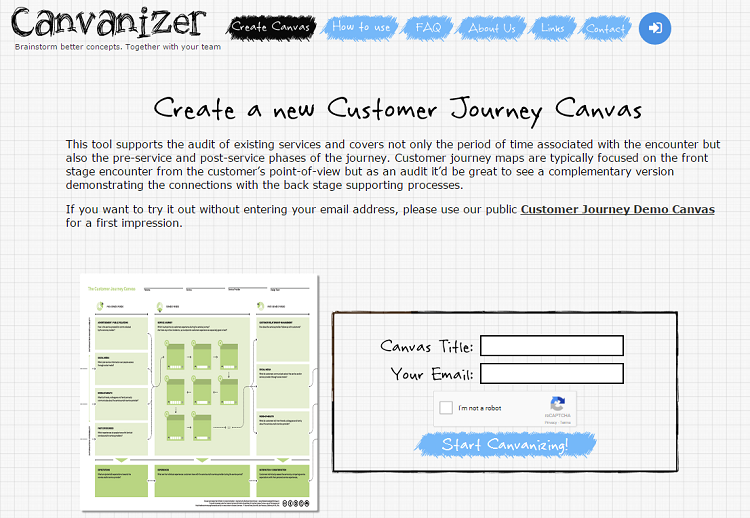
Canvanizer – A tool for drawing customer Journey map
Canvanizer is also a simple next option for mapping cruise lines for many different areas of the business including customer journey. The downside of this tool is that it does not integrate data, however, it can be a good solution for marketers seeking to visualize information and share it with internal teams. At the same time, each template also provides detailed instructions on how to use as well as the necessary elements.
… And
Will your business apply Omnichannel customer journey map to enhance customer satisfaction?
Let us hear your voice! Comment now!





1 Comment
Customer experience can start in many different places and journeys can be varied. The “omnichannel customer journey” refers to the combination of channels designed to make it simple for your customers to take actions with your business.
With the aid of technology, businesses are becoming more connected through one-click technologies, and are giving their customers the ability to complete transactions in a more efficient way.
If you’re a business owner, one way you can create an omnichannel customer journey is by providing access to your products and services across multiple platforms using websites, mobile applications and social media accounts.
Another way is by allowing your customers to view and pay their bills online or on the go using email or text message reminders, or by providing them with self-service options.